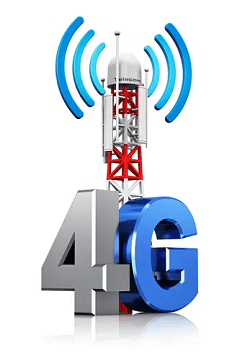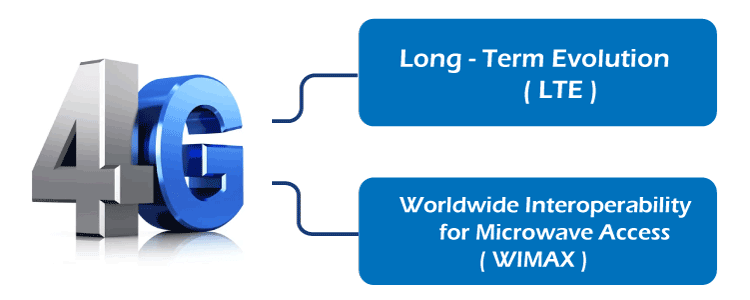4G Mobile Communication Technology
Mobile communication is a way to communicate with other people at a different locations without any physical connection. It enables to transmission of voice and multimedia data from one mobile or computer device to another without any need for a physical connection between them. A Mobile phone or Cellular phone is an example of mobile communication. Since the introduction of mobile communication, this technology has come a long way and has evolved a lot. Many technological developments have been made to make mobile communication more efficient and serve users better. It was introduced as 1G (First Generation- Voice-only communication), and today we are widely using 4G technology. 4G is the fourth Generation of mobile network technology, which is the successor of 3G and preceded by the 5G network. It provides a much higher data transmission speed than its successor networks, making it preferable at this stage of a fast lifestyle. In this topic, we will learn more about 4G Mobile communication, its introduction, working, availability, etc. What is 4G?4G is known as the fourth Generation of Mobile Communication or wireless communication technology, which is the successor of the 3G network. It provides high data transmission speed and is suitable for HD video calling, fast download and upload, live streaming, online gaming, etc. A 4G system must adhere to the capabilities and features specified by the ITU(International Telecommunication Union) in IMT advanced, including transmission technology and data speed. 4G network provides up to 100 Mbps speed to users, far higher than a 3G network. 4G enables users to stream high-definition audio and videos without interruption due to its high speed. It also facilitates wireless broadband that allows the users to access the internet without any need for fixed wired. Features of 4G Mobile Network
Categories of 4GA 4G network is categorized into two categories: 
How does 4G Network work?At a basic level, a 4G mobile connection transmits the signal via an antenna over radio frequencies, which allows mobile devices to connect to mobile networks. The 4G capabilities for transmitting and receiving the signal are based on Multiple Input and Multiple Output (MIMO) and Orthogonal Frequency Division Multiplexing (OFDM) technologies. Due to these technologies, 4G offers high capacity and bandwidth comparison to 3G. MIMO technology reduces network congestion as compared to 3G, and hence services can be served to more users without network congestion. 4G network supports all-IP standards for both voice and data transmission. 4G is more efficient for mobile network providers to operate and optimize than managing different network technologies for voice and data because of the all-IP network. Advantages of 4G
Disadvantages of 4G
Future of 4GAlthough 4G is much more efficient and fast compared to 3G, it is still lacking compatibility with the fast-growing technologies that need many high-speed networks. Hence after 4G, 5G Technology is ready to make a boom in the mobile communication sector. 5G mobile phones with extremely high data rates, IP core, and worldwide coverage will offer features which have not been imagined so far. Currently, 5G is neither available worldwide nor being used universally as it requires a lot of changes in network infrastructure and other things. It will drastically change the current landscape of mobile communication. It is currently available in the US, China, Canada, Italy etc. However, very soon, it will be available worldwide.
Next TopicTypes of Wireless Transmission Media
|
 For Videos Join Our Youtube Channel: Join Now
For Videos Join Our Youtube Channel: Join Now
Feedback
- Send your Feedback to [email protected]
Help Others, Please Share









